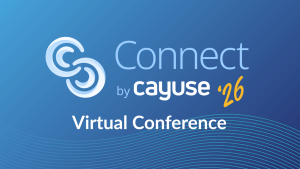Blog
How to Avoid Grant Award Audits Related to Misrepresentation of Effort
- Healthcare
- Higher Education
- Life Sciences
- Nonprofit
Each organization is responsible for ensuring that direct expenses charged to federally sponsored agreements are allowable under a set of strict cost principles. Today, let’s talk about audits stemming from misrepresenting effort.
Effort certification mandates
The Uniform Guidance requires recipients of federal funding to periodically certify that direct salary charges to sponsored projects are reasonable and reflect actual work performed.
Typically, salaries are the largest category of charges to federal grants, representing roughly two-thirds of all direct charges. Because most researchers and staff who work on federal research grants might also be involved with other grants or other university activity, apportioning their effort among various activities ensures that the appropriate compensation is allocated to their federal grant work. The process that accomplishes this is referred to as effort reporting.
Effort reporting is often pretty complex. Researchers don’t always fully understand the rules of effort reporting, and it can be cumbersome to handle manually or with complex systems. Accurate effort reporting requires a full understanding of regulations.
Effort-related audits
Effort reporting has been the subject of several federal audits in the past few years. Here are a few examples:
Weill Medical College of Cornell University
The audit revealed that the principal research investigator for the grants for which Weill Medical College sought funding failed to disclose to the government the full extent of her various active research projects. These omissions deprived the government of its ability to assess the researcher’s ability to perform the projects in the grant applications.
University of Nevada – Reno
Key audit findings included instances of noncompliance with federal, NSF, or university effort reporting requirements including: faculty salaries exceeding NSF’s two-ninths rule, salary cost transfers processed without proper justification, and costs charged to NSF grants that did not directly benefit the research project.
University of Colorado – Denver
An audit found that employees prepared personnel activity reports that included the total hours worked, but these reports did not identify the projects or activities on which the employees worked. For example, 100% of one hourly employee’s effort was charged to an award. The employee’s personnel activity report identified the hours worked but did not identify the project for which the hours were spent. Because the personnel activity report did not reflect the project or activity for which the employee expended effort, it did not provide adequate documentation to support the determination to distribute salaries and wages for this employee.
How to avoid award audits related to misrepresentation of effort
If you want to avoid audit findings such as the ones summarized above, it’s critical to accurately track effort reporting.
Here are some key tactics to prevent findings such as the ones above:
- Maintain accurate Other Support pages. Other Support Pages provide summary information about the active and inactive sponsored projects supporting key personnel participating on a proposed project. Accuracy is key.
- Use an automated effort certification system. Project Effort is a cloud-based solution that’s easy to use and automates cumbersome record-keeping.
- Thoroughly review effort distributions with responsible researchers for themselves and all personnel supported on their awards.
- Check guidelines for agency-specific effort rules.
- Provide training for researchers and staff involved in effort reporting functions.
As we noted, many organizations turn to effort reporting systems to help track and manage this process, and help avoid unfavorable audit findings. To learn more, contact us today!

